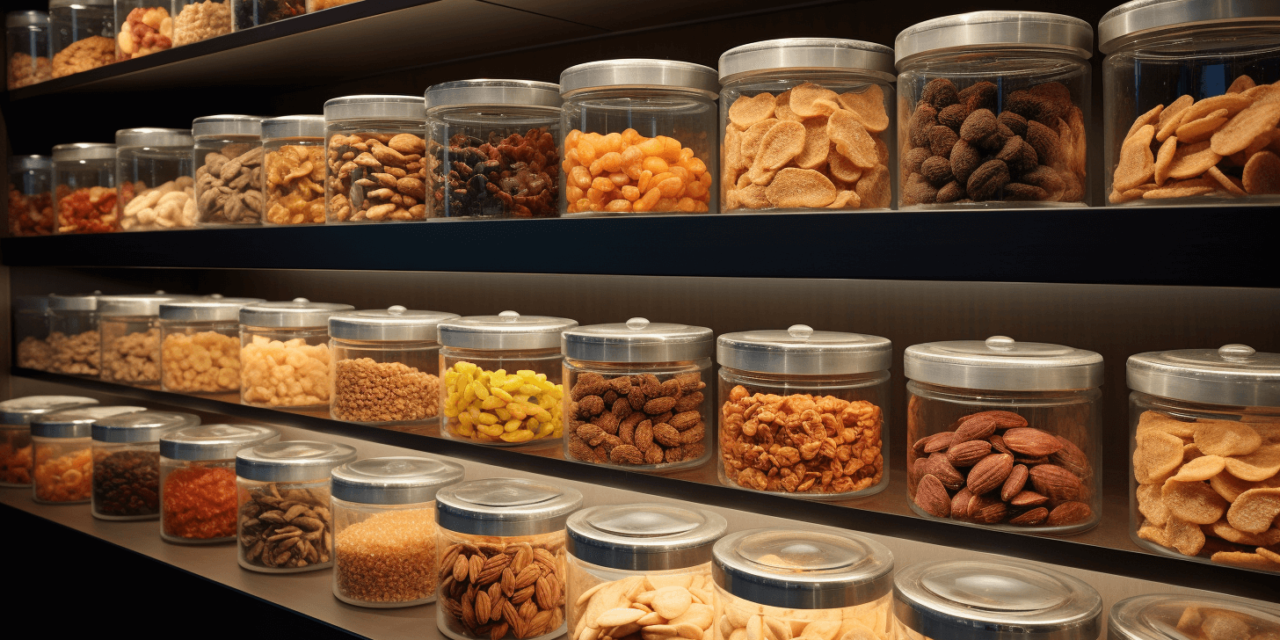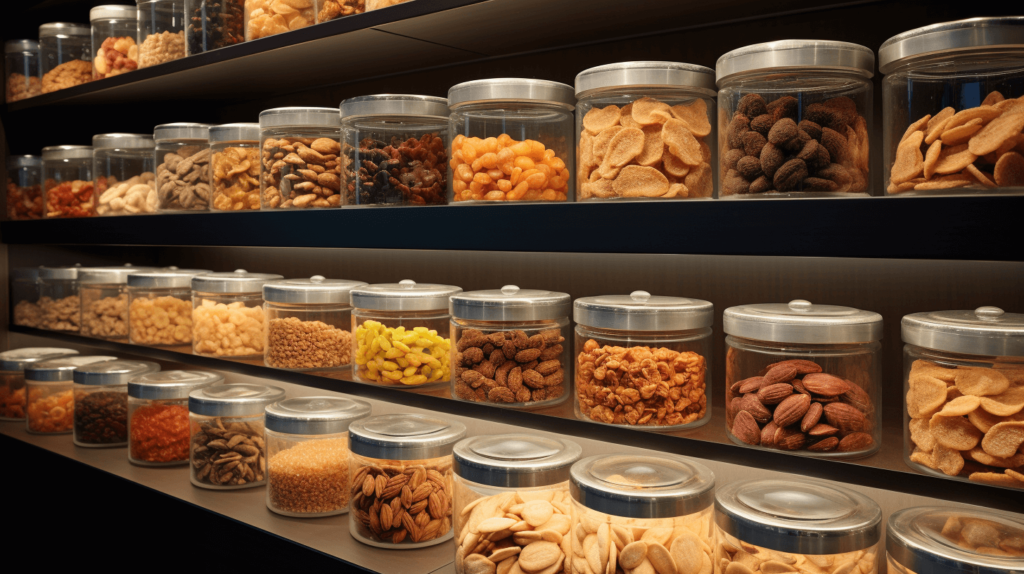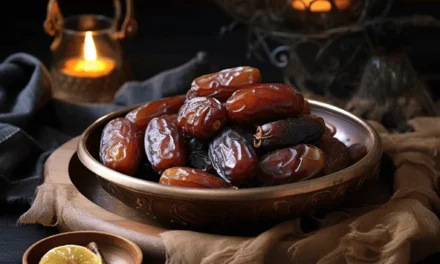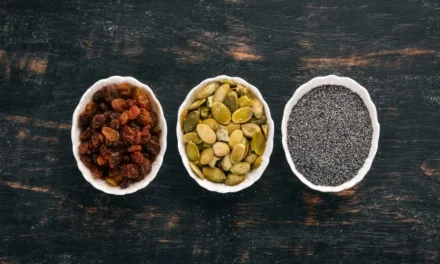When you aim to keep your dried fruits tasty and in good shape, it’s essential to understand the
proper storage techniques. Effective storage doesn’t only maintain their flavor and nutrients but
also extends their lifespan. This Article will cover various factors that influence “How To Store Dry
Fruits”, such as temperature, humidity, light exposure, and packaging.
Importance of Proper Storage
Storing dried fruits correctly is super important to keep them tasty and nutritious as time goes
on. Dried fruits have less water, which stops things like bacteria and mold from growing.
However, despite not being wet, if they’re in a humid or damp environment, they can still spoil or
develop an odd taste.
Moreover, when dried fruits come into contact with air and light, they can deteriorate, losing
valuable nutrients and experiencing changes in taste. But if you grasp the art of proper storage,
you can extend their shelf life and enjoy their exceptional flavor for an extended period.
Purpose of the Guide
This guide is here to provide you with all the necessary information on correctly storing dried
fruits. It’s all about ensuring their longevity and preserving their quality. No matter if you buy a
bunch, get them as presents, or just want to keep them for a while, knowing how to store them
right stops them from going bad, keeps them yummy, and saves their flavor.
How to Store Dry Fruits?
Here are the ideal storage conditions for dry fruits:
Temperature and Humidity
Recommended Temperature Range:
The best temperature to keep dried fruits fresh is around 50°F to 70°F (10°C to 21°C). It helps
stop things like bacteria and enzymes from making them go bad. But it’s crucial not to let the
temperature change too quickly, as that can make moisture appear in the container and mess
up the dried fruits.
Importance of Low Humidity:
Keeping humidity low is a big deal when you store dried fruits. If it’s too humid, the fruits can
suck in moisture from the air. It makes them change how they feel, get less crispy, and even
grow mold. Too much moisture can mess with their taste and make them go bad. So, ensuring
there’s not a lot of humidity around helps dried fruits last longer and stay yummy.
Air-Tight Containers
Using Sealed Containers:
Keeping dry fruits in containers that seal really well is important. See, the air has oxygen that
can make the fruits change faster. Nutrients can break down and might not taste or look the
same. But when you use containers that lock tight, they stop the air from getting in. It keeps the
fruits fresh and good for a long time.
Avoiding Exposure to Air:
When dried fruits hang out in the open air, they can soak up moisture and get yucky stuff in
them. Also, the air can steal the natural oils from nuts and seeds, making them taste bad. But if
you put the dried fruits in containers that shut tight, you make a safe space that stops the air
from causing problems.
Dark and Cool Location
Preventing Sunlight Exposure:
Sunlight has UV rays that can mess with the good stuff in dried fruits, like their nutrients and
natural stuff. To keep their color, taste, and nutrients safe, put them in a spot without direct
sunlight.
Avoiding Warm Areas:
Warm temperatures can accelerate the rate of chemical reactions, including oxidation and
moisture absorption. Storing dry fruits in a cool environment helps slow down these reactions,
maintaining their quality and nutritional value. Avoid areas near stoves, ovens, or heating vents,
as these can expose the dry fruits to heat and compromise their integrity.
If you follow these storage tips, your dried fruits will stay yummy and full of good stuff for a long
time. These tricks stop them from going bad, keep their texture nice, and let you enjoy all the
healthy things they have to offer.
Types of Suitable Containers
Choosing the right container type is essential for properly storing dry fruits. Here are more
details about the types of suitable containers you mentioned:
Glass Jars
Transparency for Easy Identification:
Using glass jars lets you see what’s inside without even opening them. It is helpful when finding
a specific dried fruit quickly, saving you time and making things easier!
Air-tight Lids for Freshness:
Many glass jars come with air-tight lids that help maintain a barrier against air and moisture.
This feature helps in preserving the freshness, flavor, and nutritional value of the stored dry
fruits.
Plastic Containers
Ensuring BPA-Free Containers:
When opting for plastic containers, it’s vital to select those marked as “BPA-free.” A compound
known as Bisphenol A (BPA) is present in certain plastics, which could migrate into your food.
So, pick containers without BPA to keep your food safe.
Tight-Sealing Lids:
Like glass jars, plastic containers with tight-sealing lids help prevent air and moisture from
entering. Look for containers with reliable seals that create an air-tight environment to keep your
dry fruits fresh for longer.
Vacuum-Sealed Bags
Removing Excess Air:
Vacuum-sealed bags are designed to remove excess air from the package, which can help
prevent oxidation and maintain the quality of dry fruits. Removing air also reduces the risk of
moisture getting in and causing spoilage.
Preserving Taste and Texture:
Vacuum-sealed bags are great at keeping dried fruits tasty and just the way they should be.
These bags seal up tight and don’t let air in. That means the flavors and smells of the dried fruits
stay awesome.
Additionally, remember to monitor the temperature, humidity, and storage location. It really
matters to keep things just right. Regardless of the container type you choose, the key is to
shield the dried fruits from excessive air, moisture, light, and abrupt temperature shifts. This
method ensures that you can relish the deliciousness and benefits of your dried fruits for an
extended period.
Common Mistakes to Avoid
Certainly, avoiding common mistakes is really important when storing dried fruits to ensure they
stay awesome and last long. Let’s take a closer look at each of these common mistakes.
Storing in the Open
Exposure to Air and Light:
Leaving dry fruits exposed to open air and light can lead to accelerated oxidation. Oxidation can
cause dry fruits to lose their flavor, color, and nutritional content. It can also result in the
development of off-flavors and staleness.
Accelerating Spoilage:
Open storage exposes dry fruits to potential contaminants and moisture from the surrounding
environment. It can lead to spoilage, mold growth, and a decrease in quality. Always store dry
fruits in sealed containers to prevent these issues.
Mixing Varieties Improperly
Preventing Flavor Transfer:
Different dry fruits have distinct flavors, and storing them together without proper separation can
lead to flavor transfer. It can alter the taste of the fruits and might not be desirable. Keep
strongly flavored dry fruits separate from more delicate ones to maintain their unique tastes.
Separating Strongly Flavored Fruits:
Some dry fruits have strong aromas that can overpower other fruits if stored together. For
example, storing pungent fruits like dried apricots with delicate ones like raisins can result in
cross-contamination of flavors. It’s best to store such fruits separately to preserve their individual
characteristics.
Using Non-Food Grade Containers
Avoiding Potential Contaminants:
Using non food-grade containers can introduce harmful chemicals or contaminants to your dry
fruits. Always choose containers specifically designed for food storage to ensure the safety and
quality of your stored items.
Choosing Appropriate Storage Materials:
When selecting containers, consider the materials they are made of. For example, avoid
reactive containers that can leach chemicals into the dry fruits. Opt for containers made from
materials like glass, BPA-free plastic, or food-grade metals that won’t affect the quality of the dry
fruits.
By avoiding these common mistakes, you can prolong your dry fruits’ shelf life, flavor, and
nutritional value. Remember to follow proper storage guidelines, use suitable containers, and
pay attention to the conditions in which you store your dry fruits. It will help you enjoy them at
their best for a longer period of time.
Frequently Asked Questions:
How can I tell if stored dry fruits have gone bad?
Check for things like mold, a strange or bad smell, or if they look or feel different. If you see any
of these, it’s better to discard them.
Can I store dry fruits in the pantry alongside other foods?
Yes, you can store dry fruits in the pantry, but make sure they are in air-tight containers to
prevent cross-contamination and maintain freshness.
Can I freeze dry fruits for long-term storage?
Yes, you can freeze dry fruits for long-term storage. Freezing can significantly extend the shelf
life of dry fruits. Place them in air-tight containers or vacuum-sealed bags before freezing.
Can I use regular plastic bags for storing dry fruits?
Using regular plastic bags is not ideal as they aren’t air-tight. Air-tight containers or resealable
bags are better for preserving dry fruit quality.
What’s the shelf life of frozen dry fruits?
Frozen dry fruits can stay fresh for 6-12 months or longer, depending on the type and storage
conditions.
Conclusion:
In the world of dried fruits, storage is key. Controlled temperature, humidity, and light preserve
flavors. Air-tight containers defy oxidation’s grasp, while darkness shields from light’s harm.
Avoid mistakes – separate with care, and choose containers wisely. Let your dried fruits sing
with taste and vitality, a timeless encore of nature’s sweetness.







